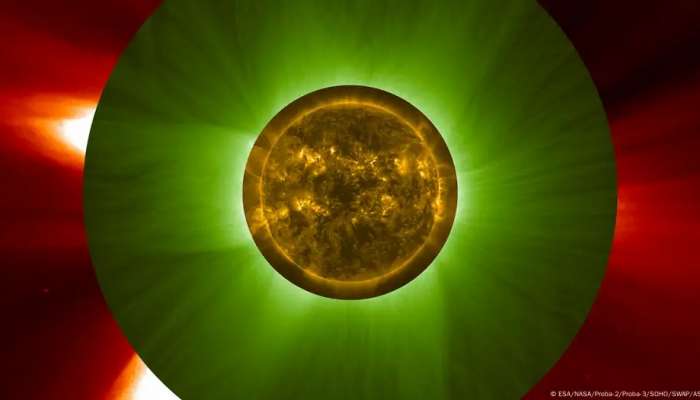
Paris: First came Solar Orbiter, the European Space Agency and NASA mission that revealed the sun's poles for the first time in early June.
Then came Proba-3, less than a week later. It's another European mission, launched from India in December 2024, to observe the solar corona — the outer atmosphere of the sun.
To do that, Proba-3 achieved yet another first.
The mission consists of two spacecraft flying 150 metres (490 feet) apart. Together, they performed a millimeter-precision flying maneuver so that one cast a shadow over the other — creating an artificial solar eclipse.
It allowed Proba-3 to block out the fierce face of the sun, leaving only its surrounding corona in view. No other spacecraft has observed the sun's corona as close to the solar rim.
Why scientists are interested in the solar corona
Scientists are somewhat baffled by the solar corona, and there are relatively few opportunities to observe it in its entirety.
The solar corona has three distinct regions: the high corona, low corona and a gap in between. Though there are instruments to study the high corona and the low coronas, the gap is usually only possible to see from Earth during a natural solar eclipse.
Another mystery: The solar corona is much hotter than the sun at its surface.
Temperatures in the corona can reach higher than 1.1 million degrees Celsius (almost 2 million degrees Fahrenheit). The surface of the sun, however, rests at a cool 5,500 °C (around 10,000 °F). Perhaps stranger still, the sun's core is a blistering 15 million °C.
Astronomers think that because the solar corona is far from the surface — and reaches far into space — it should be cooler, not hotter.
Proba-3: A test of new space technology
Proba-3's two spacecraft — Occulter and Coronagraph — create artificial solar eclipses every 19 hours and 36 minutes in orbit and hold their precision flying formation for six hours.
Conventional telescopes would be blinded by the sun's light, unable to see the corona. But the Occulter blocks the light accurately. With a disc measuring just 1.4 metres (4.5 feet), it casts a mere eight centimetre (3.15-inch) wide shadow — enough to create an artificial eclipse.
"It is exciting to see these stunning images validate our technologies," said Dietmar Pilz, ESA director of technology, said in a press release on Monday.
They fly autonomously, using star trackers that help them recognise constellations and GPS for further positioning.
New ways of seeing the sun on the rise
Astronomers are quickly gaining new insights into the sun. In early June 2025, ESA and NASA released the first images of the solar poles as captured by the Solar Orbiter.
The Solar Orbiter uses a newly designed orbit to see the poles and gathers data on the sun's magnetic field, solar cycle and how solar weather works.
"The sun's poles are literally terra incognita," Sami Solanki, of the Max Planck Institute for Solar System Research, said in an ESA press release on June 11.
NASA's Parker Solar Probe became the first spacecraft to fly through the solar corona in 2021. The probe was built to face the sun's heat and radiation and deliver some of the closest observations of our star.
The Proba-3 mission also aims to improve scientific understanding of solar weather, such as coronal mass ejections and solar storms. Extreme solar weather can affect telecommunications satellites and power grids on Earth.